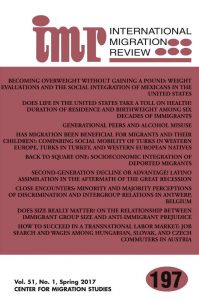‘Cloud chasers’ and ‘substitutes’: e-cigarettes, vaping subcultures and vaper identities
by Rikke Tokle ·

The social meaning of e-cigarettes and vaping involves a vaping subculture, ideas about health through harm reduction, pleasure and community, as well as addiction and stigma. Some use e-cigarettes to quit smoking; others thrive in the flavoured clouds. In addition, there is a ‘split vision’ of health and stigma in the perceptions of vaping where the vaper identities are constantly negotiated.
The use of e-cigarettes has increased and moved beyond a cessation-only practice, were vaping has started to serve social, recreational and sensory expectancies, as well as new rituals and social practices. In a study (1) of the culture of e-cigarettes, we explore how individuals can understand the same product in different ways. Our findings add to the understanding of varying motives for use and new insights into the possible diffusion process of e-cigarettes
The study is based on interviews with 30 adult, Norwegian vapers, recruited from various places, such as vaping forums, vape shops, and nightlife settings. They represent a heterogeneous group in terms of age, gender and socio-economic status. All but one of the participants are former smokers.
Two perspectives on a vaping subculture in Norway
For some, e-cigarettes are a symbol of high-quality enjoyment, giving pleasure in a more complex and sophisticated manner than ordinary cigarettes. Others take a different position, expressing dislike for the use of e-cigarettes as it unintentionally can connect them to a vaping subculture they perceive as uncool. The vaping scene is typically described as a “masculine, street-car-aesthetic with bikini-women and bad music”.
The common denominator in the stories is of a vaping subculture, albeit from different positions. Interviewees referred to vape forums on the internet, championships and vape festivals. They agreed that traditional cigarettes and e-cigarettes hold different symbolic meanings, describing cigarettes as simple and straightforward and e-cigarettes as more advanced. Two dominant vaper identities became evident; ‘cloud chasers’ and ‘substitutes’.
Cloud chasers

Cloud chasers are dedicated vapers who identify with the subculture. They engage in vaping-related activities on social media. Some are politically involved in the ‘vape-cause’ and account for a sense of belonging to a community. The performance and the policy aspects of the vaping subculture can be seen as a reaction towards a repressive health policy and the lack of a harm-reduction oriented approach. Among these vapers, a devaluated smoker identity are often transformed into a proud vaping identity, expressing resistance and opposition. The policy dimension is marked by a bottom-up structure with the aim of influencing regulations. This grass-roots movement distinguishes this group of vapers from other users of e-cigarettes.
“For me vaping has become a hobby. Smoking never was. I want to build my own e-cigarettes – or personal vaporisers to call them by the right term. It’s all about advanced equipment to get the best experience possible in terms of taste and clouds.” (Andre 45)
Pragmatic substitutes

The second group is (the) substitutes. They are primarily former daily smokers who use e-cigarettes in a more pragmatic or defensive manner, to avoid health risks, to escape the stigma of smoking and to manage nicotine addiction. Self-identity as a vaper was generally lacking. Vaping is linked to the stigmatised smoker identity they want to escape, and is restricted to private contexts. They do not identify with the subculture, but regard vaping as an efficient harm reduction tool and a smoking substitute. Through discreet use, they manage nicotine addiction as well as stigma. They emphasise improved health, the pleasures of vaping and successful smoking cessation. At the same time, they are defensive and often ambivalent regarding the symbolic meaning and their use of e-cigarettes, often drawing symbolic boundaries (2) by distinguishing their use of e-cigarettes from ‘performance’ vaping.
“E-cigarettes are for people who don’t want to quit smoking, but who should quit. This [referring to her e-cigarettes] is smoking. Chewing gum is not smoking; using a nicotine bandage is not smoking. This is the only way you can give up smoking if you don’t want to quit smoking.” (Ingrid 41)
Pleasure, but also a ‘split vision’ of health and stigma
Our study yields new evidence of the importance of the ritual aspects of vaping (3) (4). Several substitutes describe that e-cigarettes enable them ‘to quit smoking without quitting’; letting them continue with the often-valued practice of ‘smoking’, albeit in a different manner and with potential for less damage to health. However, among the substitutes, the perceptions of vaping as an activity intrinsically linked to their nicotine addiction come with a price in terms of transferring stigma. As such, vaping is sometimes linked to the same smoking-related stigma they are trying to escape.
References
- Tokle, R. and Pedersen, W. (2019), “Cloud chasers” and “substitutes”: e‐cigarettes, vaping subcultures and vaper identities. Sociol Health Illn, 41: 917-932. doi: 10.1111/1467-9566.12854
- Copes, H. (2016). A narrative approach to studying symbolic boundaries among drug users: A qualitative meta-synthesis. Crime, Media, Culture, 12(2), 193-213.
- Barebeau et al., 2013
- Hoek, Thrul & Ling, 2017
Author information
Rikke Tokle works at the Department of Alcohol, Tobacco and Drugs, Norwegian Institute of Public Health. Rikke is currently working on a PhD-project in sociology at the University of Oslo, were she explores the use of e-cigarettes. She does research in Sociological Theory, Qualitative Social Research and Cultural studies. Her most recent publication is ‘“Cloud chasers” and “substitutes”: e-cigarettes, vaping subcultures and vaper identities’ which was published in Sociology of Health & Illness in January 2019.






